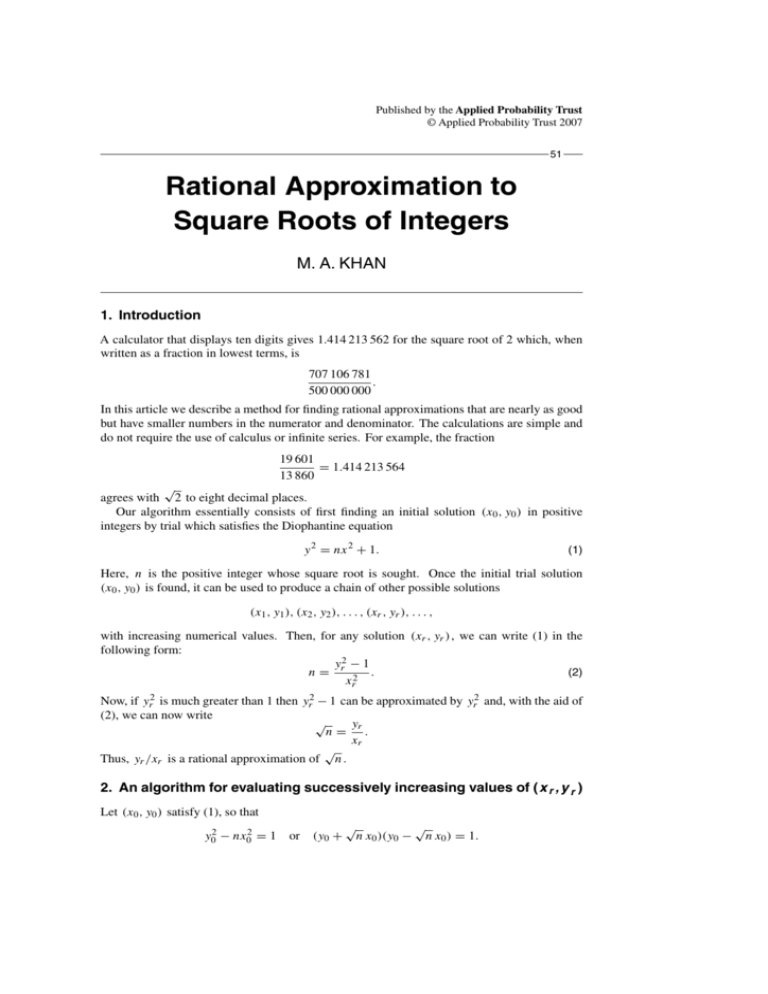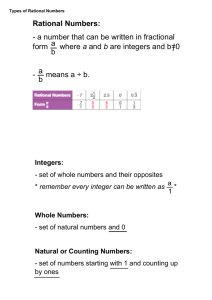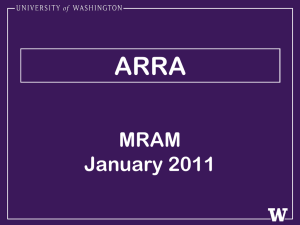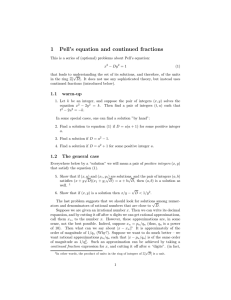Rational Approximation to Square Roots of Integers
advertisement

Published by the Applied Probability Trust © Applied Probability Trust 2007 51 Rational Approximation to Square Roots of Integers M. A. KHAN 1. Introduction A calculator that displays ten digits gives 1.414 213 562 for the square root of 2 which, when written as a fraction in lowest terms, is 707 106 781 . 500 000 000 In this article we describe a method for finding rational approximations that are nearly as good but have smaller numbers in the numerator and denominator. The calculations are simple and do not require the use of calculus or infinite series. For example, the fraction 19 601 = 1.414 213 564 13 860 √ agrees with 2 to eight decimal places. Our algorithm essentially consists of first finding an initial solution (x0 , y0 ) in positive integers by trial which satisfies the Diophantine equation y 2 = nx 2 + 1. (1) Here, n is the positive integer whose square root is sought. Once the initial trial solution (x0 , y0 ) is found, it can be used to produce a chain of other possible solutions (x1 , y1 ), (x2 , y2 ), . . . , (xr , yr ), . . . , with increasing numerical values. Then, for any solution (xr , yr ) , we can write (1) in the following form: y2 − 1 n= r 2 . (2) xr Now, if yr2 is much greater than 1 then yr2 − 1 can be approximated by yr2 and, with the aid of (2), we can now write √ yr n= . xr √ Thus, yr /xr is a rational approximation of n . 2. An algorithm for evaluating successively increasing values of (x r , y r ) Let (x0 , y0 ) satisfy (1), so that y02 − nx02 = 1 or (y0 + √ n x0 )(y0 − √ n x0 ) = 1.











